Affiliate links on Android Authority may earn us a commission. Learn more.
SoC Showdown: Tegra K1 vs Exynos 7 Octa vs Snapdragon 805
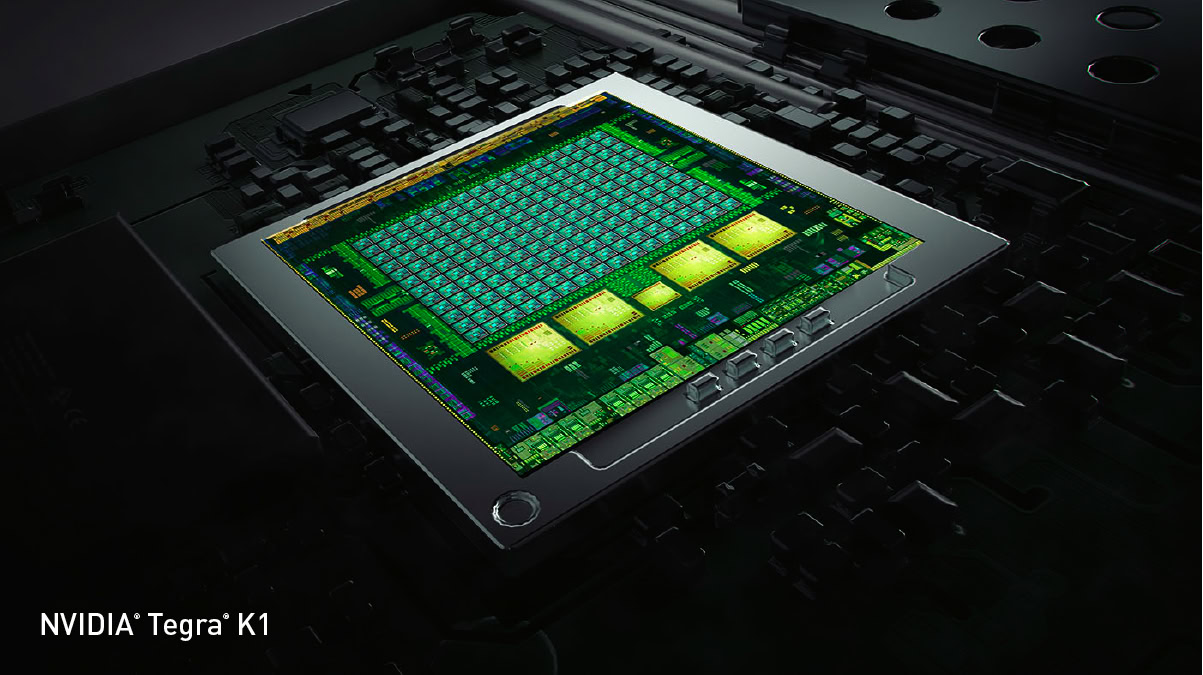
The Nexus 9 has finally arrived and its packing the first 64-bit processor available to Android consumers, courtesy of an NVIDIA Tegra K1 SoC. Samsung also sneakily detailed the specifications for its Exynos 7 Octa processor last week, which looks like a re-branding of the existing ARMv8 Exynos 5433.
64-bit support and a new architecture are all well and good, but the real test of these news chips is whether or not they can best the current high performer in the smartphone market – the Snapdragon 805. Fortunately, there are already a collection of benchmarks available for all three of these SoCs, so let’s take a look at them.
| Exynos 7 Octa (5433) | Snapdragon 805 | Tegra K1 (Denver) | |
|---|---|---|---|
CPU cores | Exynos 7 Octa (5433) 4x Cortex-A57 + 4x Cortex A53 | Snapdragon 805 4x Krait 450 | Tegra K1 (Denver) 2x NVIDIA Denver |
CPU clocks | Exynos 7 Octa (5433) 4x 1.9GHz + 4x 1.3GHz | Snapdragon 805 4x 2.7GHz | Tegra K1 (Denver) 2x 2.5GHz |
GPU | Exynos 7 Octa (5433) Mali-T760 | Snapdragon 805 Adreno 420 | Tegra K1 (Denver) 192 CUDA core Kepler |
GPU clock | Exynos 7 Octa (5433) 695MHz | Snapdragon 805 600MHz | Tegra K1 (Denver) 950MHz |
Memory | Exynos 7 Octa (5433) LPDDR3 | Snapdragon 805 LPDDR3 | Tegra K1 (Denver) LPDDR3 |
64-bit? | Exynos 7 Octa (5433) Yes (unconfirmed) | Snapdragon 805 No | Tegra K1 (Denver) Yes |
Process | Exynos 7 Octa (5433) 20nm | Snapdragon 805 28nm | Tegra K1 (Denver) 28nm |
Max camera | Exynos 7 Octa (5433) (unknown) | Snapdragon 805 2x 55MP | Tegra K1 (Denver) 2x 20MP |
Max display | Exynos 7 Octa (5433) 1600p | Snapdragon 805 2160p | Tegra K1 (Denver) 2160p |
CPU Designs
CPU performance in the Snapdragon 805 remains virtually unchanged from the company’s commonplace Snapdragon 800 and 801 SoCs. Typical clock speeds can be found in the range of 2.5GHz, although the Snapdragon 805 has been seen with a small boost up to 2.7GHz.
Samsung’s Exynos, on the other hand, moves on up to ARM’s latest Cortex-A57 and Cortex-A53 CPU core designs, which offer improvements in both performance and energy efficiency compared with the last generation Cortex-A15/A7 designs. We haven’t seen an Exynos 7 Octa branded chip in the wild yet, but the specs match that of the Exynos 5433 spotted in some versions of the Galaxy Note 4. In this case, the clock speeds were 1.3 GHz for the Cortex A53s, and 1.9GHz for the high performance Cortex-A57s.
You can read all about 64-bit, the differences between ARMv7 and v8 architectures, and processors designs in our previous coverage.
NVIDIA Denver explained
Nvidia’s latest Tegra K1 implementation matches the 2.5GHz clock speeds of the Snapdragons, but is a much stranger beast. The Denver CPU architecture is more of a high-performance general purpose CPU that works like an interpreter for the ARMv8 code-base. While this sounds suboptimal in terms of performance, NVIDIA has fitted its Denver CPU cores with a large 128MB memory cache to store optimized code in.

NVIDIA calls this process Dynamic Code Optimization and it works with all ARM-based applications. The processor stores the most commonly used instructions and places them into a highly optimized order, potentially resulting in big performance gains for your most commonly used applications. However if the code isn’t in the memory pool, the processor has to process the ARM instructions itself, which might actually slow performance down compared with a dedicated ARM processor.
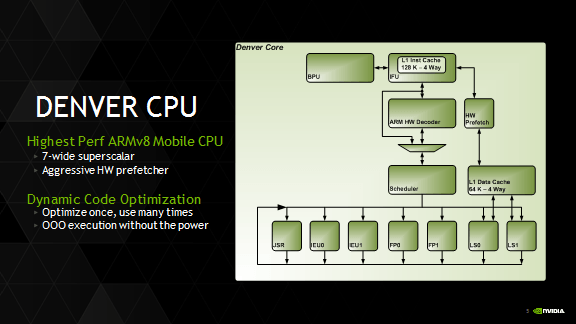
To combat this issue, the Denver CPU is implements a 7-way superscalar microarchitecture, allowing for 7 instructions to be complete led per clock cycle. This is a lot more throughput than your typical ARM processor, but come with the drawback that it takes up additional energy and a lot of die space, hence why there’s only a dual-core implementation of Denver available right now.
Essentially, NVIDIA has attempted to build higher performance processor than its competitors through a combination of pure power and attempting to optimise commonly used instructions. However, this comes with its own trade-offs in the forms of inefficient emulation, power consumption, and a larger processor size.
CPU Performance Compared
As far I’m aware, Geekbench is the only test conducted so far on NVIDIA’s Denver CPU, so we’ll have to compare processor performance across just a single benchmark. Remember, benchmarks are only an indication of real-world performance comparisons and there is a margin of error with all results.
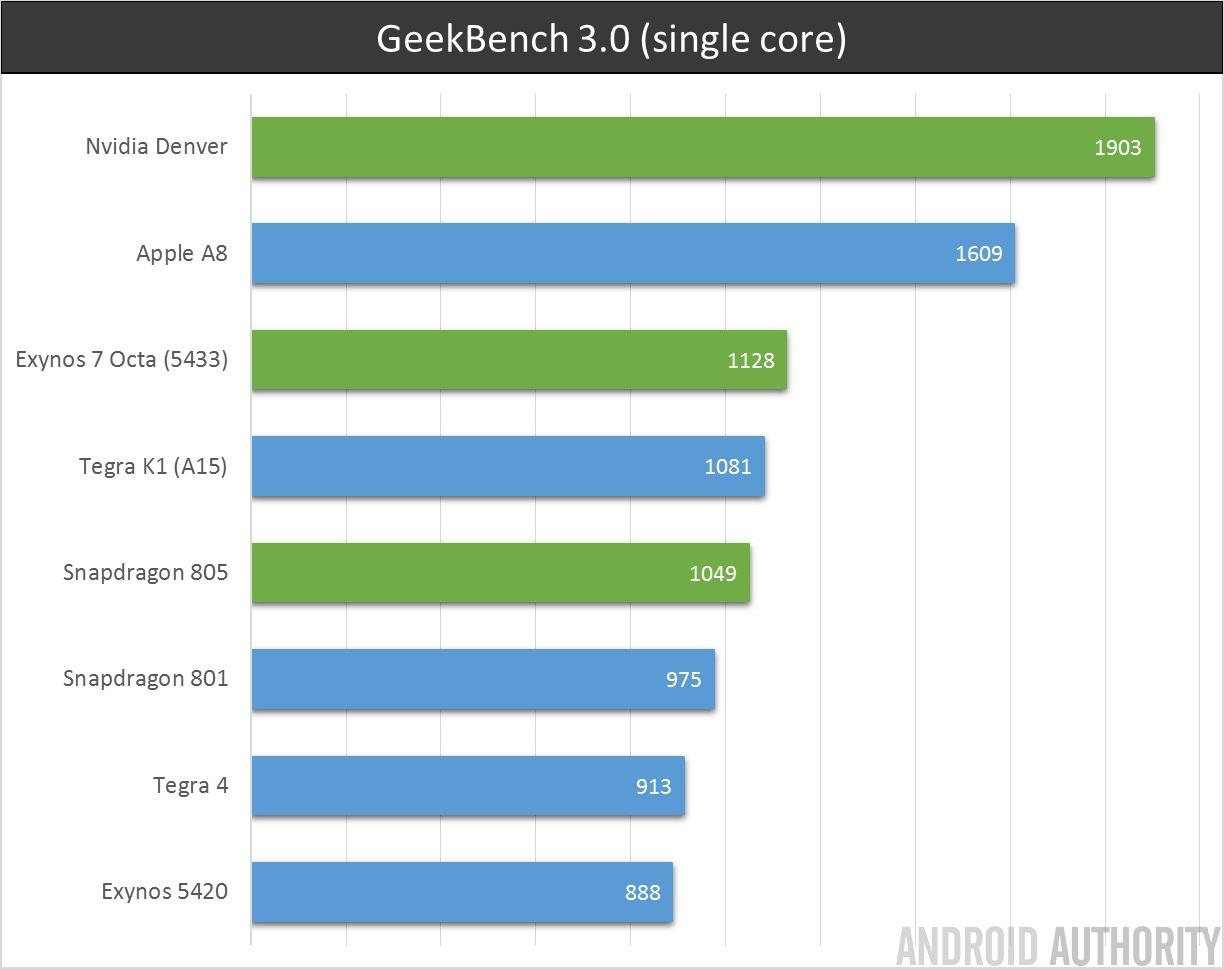
Looking firstly at single core performance, we can see that the Denver core’s brute force easily surpasses the rest of the field, The Exynos 7 chip, taken from the Note 4, also shows a strong performance, especially considering the lower clock speed of the Cortex-A57 cores when compared with the 2.5GHz+Snapdragons and Cortex-A15 Tegra K1. As expected, the Snapdragon 805 offers very little extra performance compared with the other Snapdragon 800 chips, suggesting that the Krait 400/450 architecture is maxed-out.
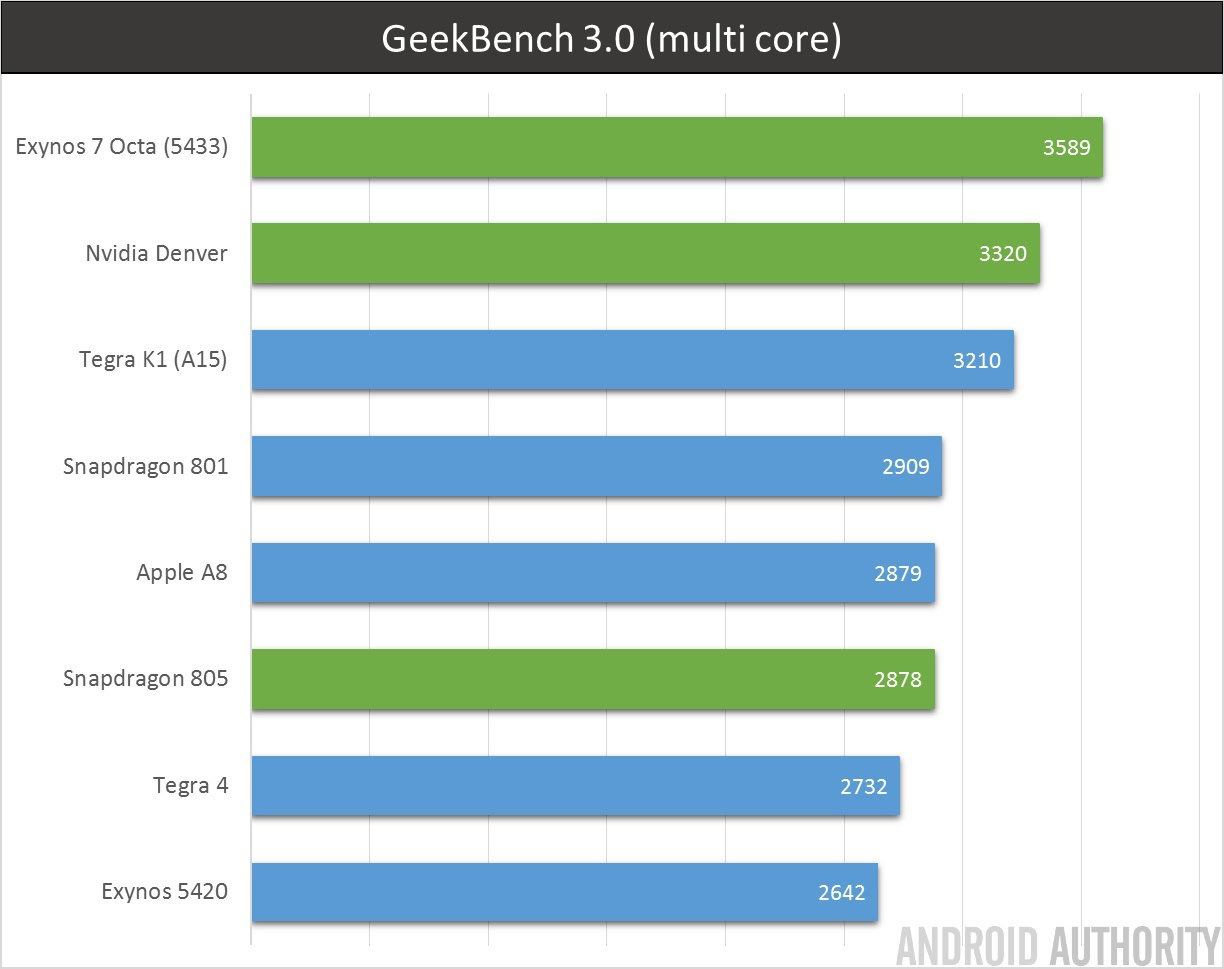
Turning to multi-core performance, we see the octo-core nature of Samsung’s latest chip come through. It will be interesting to see if Samsung bumps up the clock speed by the time it releases an SoC under Exynos 7 branding, as performance could probably be hitched a little higher. The updated big.LITTLE design trounces the older Exynos 5420 and shows big gains over the prolific Snapdragon 800 series. This sets the benchmark high for the next generation of ARMv8 Snapdragons arriving in 2015.
Nvidia’s Denver chip does surprisingly well here given that it’s just a dual-core chip. The extra single-core performance seems to allow it to complete multiple threads quickly enough to compete with dedicated multi-core processors. The Snapdragon 805 makes up for its lack of single core performance with additional cores and performs especially well against Apple’s newly designed A8 chip. However, there is clearly a gap emerging between the ARMv7 and ARMv8 generation CPUs.
Graphics Power
GPU horsepower has been bumped up a notch across each of the SoCs this time around. The Snapdragon 805’s Adreno 420 supposedly offers up to 40% more performance than the 800’s Adreno 330, whilst NVIDIA’s Tegra K1 boasts a more energy efficient version of the company’s leading desktop Kepler design. Samsung’s Exynos chip also make use of ARM’s most powerful Mali-T760 graphics chip.
For GPU tests we’re looking at two off-screen benchmarks, GFXbench’s T-Rex and Futuremark’s Ice Storm Unlimited. This allows us to look at performance without device specific features, such as screen resolution and refresh rate, affecting the results.
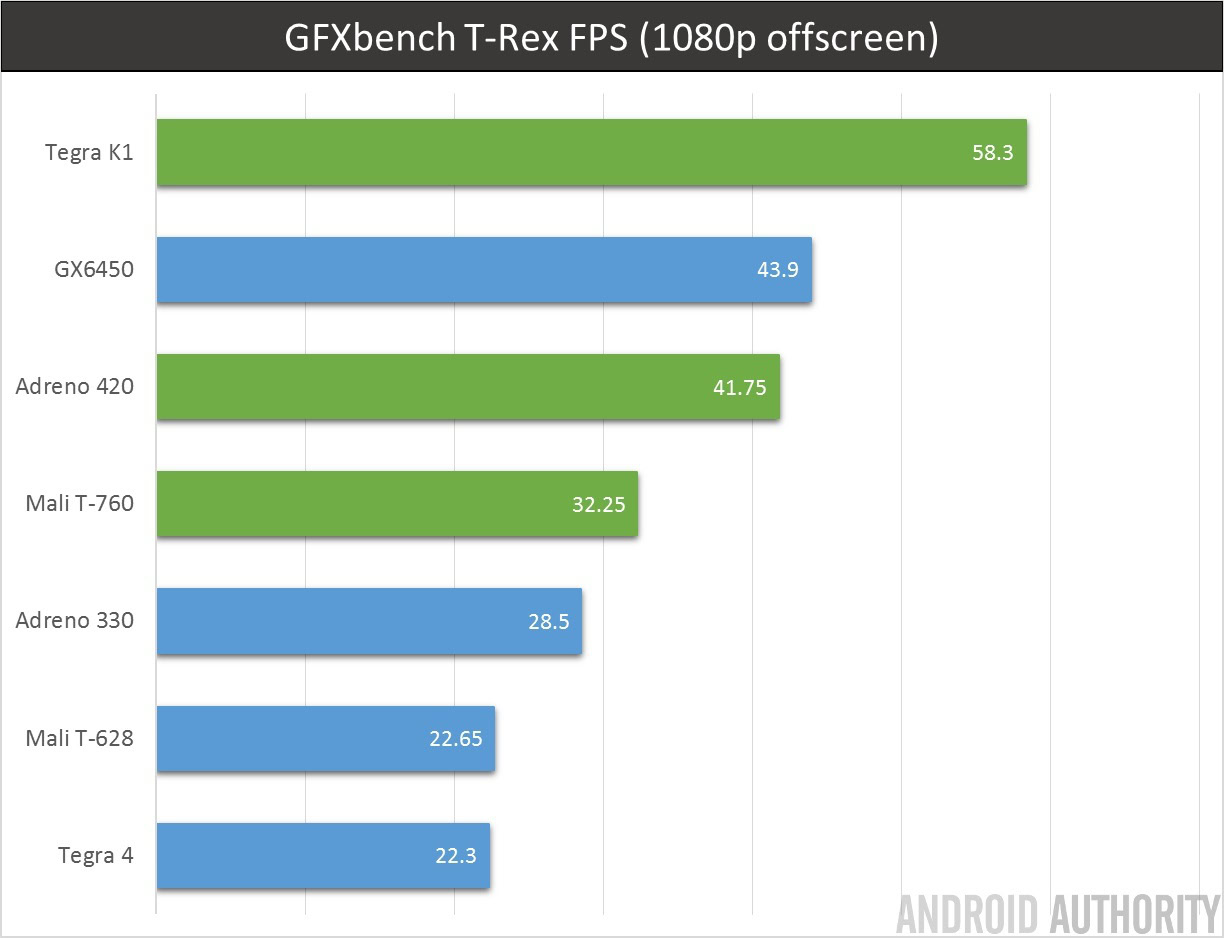
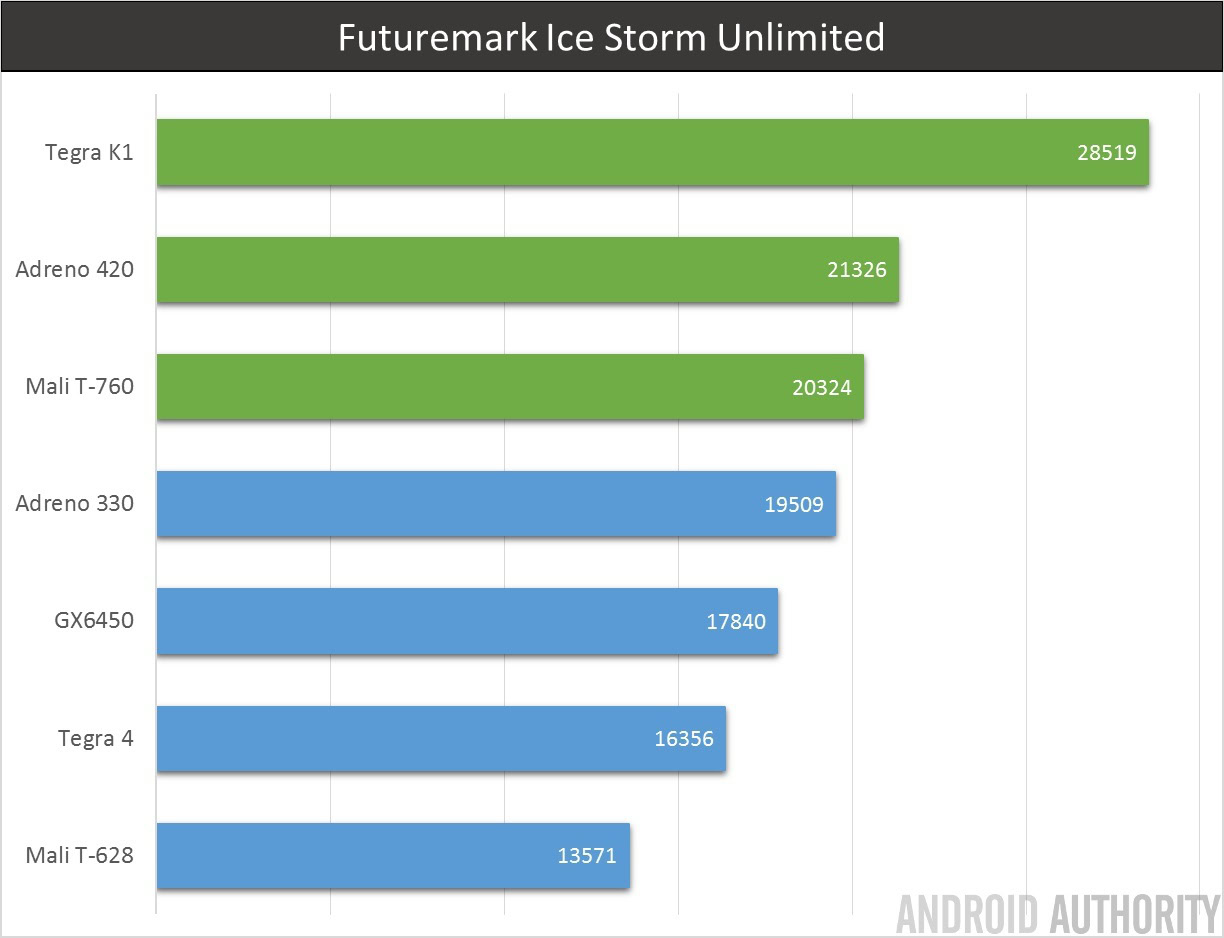
Again, NVIDIA’s Tegra K1 SoC comes out on-top, thanks to its powerhouse Kepler GPU architecture. The Qualcomm Adreno 420 fulfils on its promise for an additional 40 percent of performance over the 330, and the T-760 shows a remarkable improvement over last generation’s T-628.
In the T-Rex benchmark, the Mali-T760 seems to struggle more than expected, only just surpassing the Adreno 330. On the other hand the Apple A8’s GX6450 flies in the GFXBench, but performs less well in the Futuremark test. If we put this down to optimisation and variance between tests, the Mali-T760 still appears to be the slightly weaker of our three test GPUs.
However, these benchmarks don’t give us a good look at energy efficiency. The Snapdragon and Exynos chips are suitable for smartphones which typically have smaller batteries, while NVIDIA’s Tegra K1 chip is destined for tablets with larger batteries, allowing for the extra GPU power. Heat output could also be a problem that we can’t detect with just a few benchmarks.
Moving into the next-generation
The new Tegra K1 certainly appears very capable, but we’ll have to see how the odd CPU design holds up against specialized ARM chips in the real world. NVIDIA is most likely targeting this SoC at tablet and perhaps Chromebook form factors.
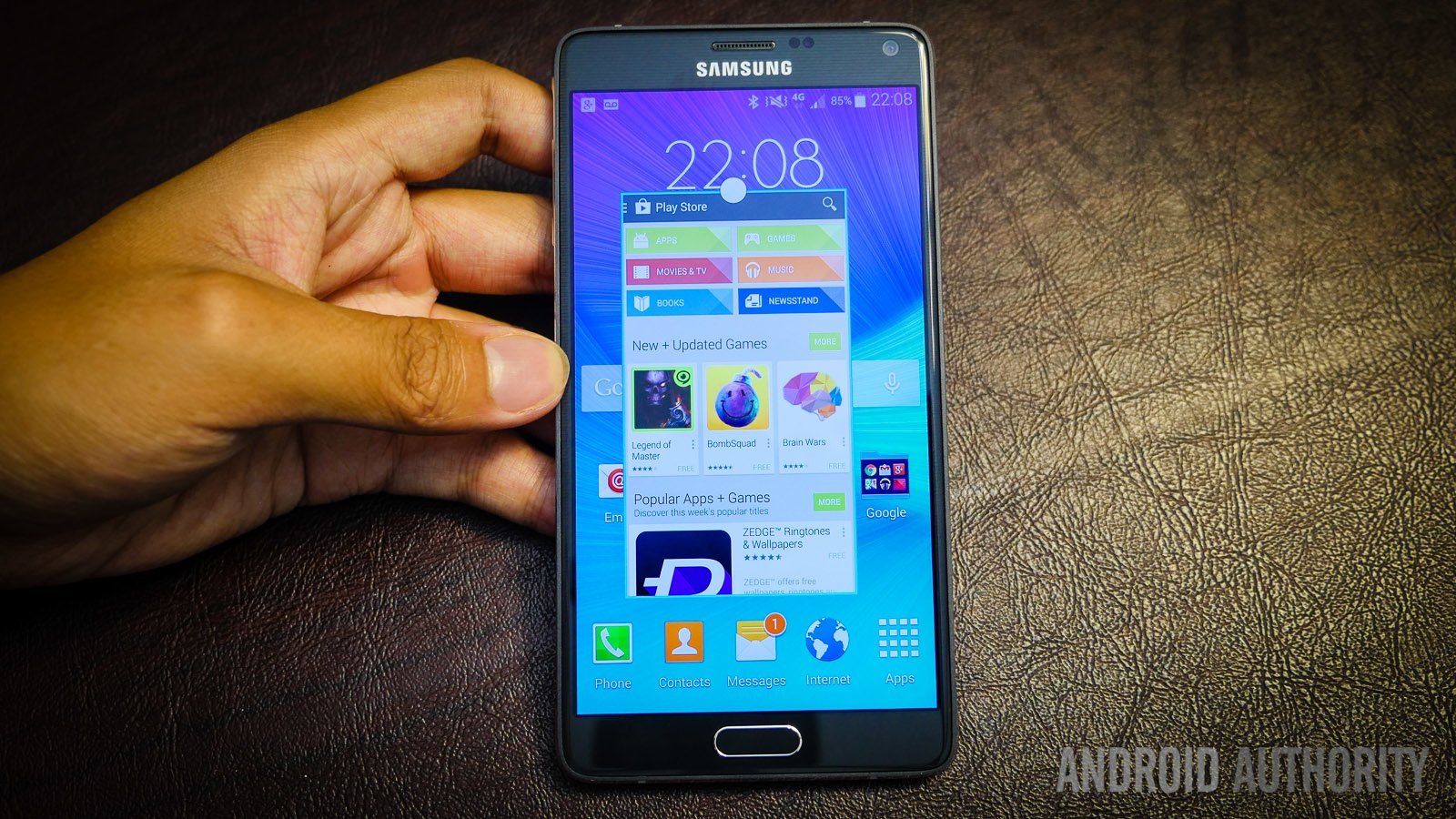
As for smartphones, the early ARMv8 Exynos chip shows us what ARM’s latest big.LITTLE CortexA57/A53 configuration is capable of, and the results are very promising. However, there’s already a discrepancy in the 5433’s GPU performance when compared with Qualcomm’s current high-end Snapdragon 805. The gulf could grow even more next year when the Snapdragon 810 is set to arrive, which will feature an ARM big.LITTLE CPU and Adreno 430 GPU configuration.
2015 is going so see another decent improvement in CPU performance, but GPU gains are where the big numbers are. NVIDIA’s graphics pedigree has shone through in these benchmarks and the CPU looks very competitive with upcoming ARM-based processors. The final test for NVIDIA’s Tegra K1 will come when we get our hands on the Nexus 9.